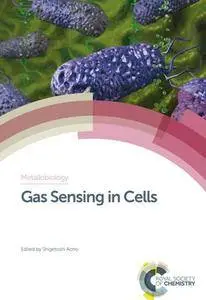Gas Sensing in Cells
by Shigetoshi Aono
English | 2018 | ISBN: 1782628959 | 315 Pages | PDF | 23 MB
by Shigetoshi Aono
English | 2018 | ISBN: 1782628959 | 315 Pages | PDF | 23 MB
Gas molecules such as O2, NO, CO and ethylene are present in the environment and are endogenously (enzymatically) produced to act as signalling molecules in biological systems, including the regulation of metabolic networks, chemotaxis, circadian rhythms, mammalian hypoxia responses, and plant ethylene responses by transcriptional, translational, or post translational control. Sensing these gas molecules is the first step in their acting as signalling molecules. When a sensor domain/protein senses an external signal, intra- and inter-molecular signal transductions take place to regulate the biological function of a regulatory domain/protein such as DNA-binding, enzymatic activity, or protein–protein interaction. Interaction between gas molecules and sensor proteins is essential for recognition of gas molecules. Metal-containing prosthetic groups such as haem, iron–sulfur clusters, and non-haem iron centres are widely used. As these metal-containing centres are good spectroscopic probes, detail characterizations have utilized spectroscopic techniques along with X-ray crystallography.Covering both the signalling and sensing of gaseous molecules, this book provides the first comprehensive overview of gas sensor proteins in both prokaryotic and eukaryotic cells. This book will be particularly interesting to postgraduates and researchers in biochemistry, molecular biology and metallobiology.



